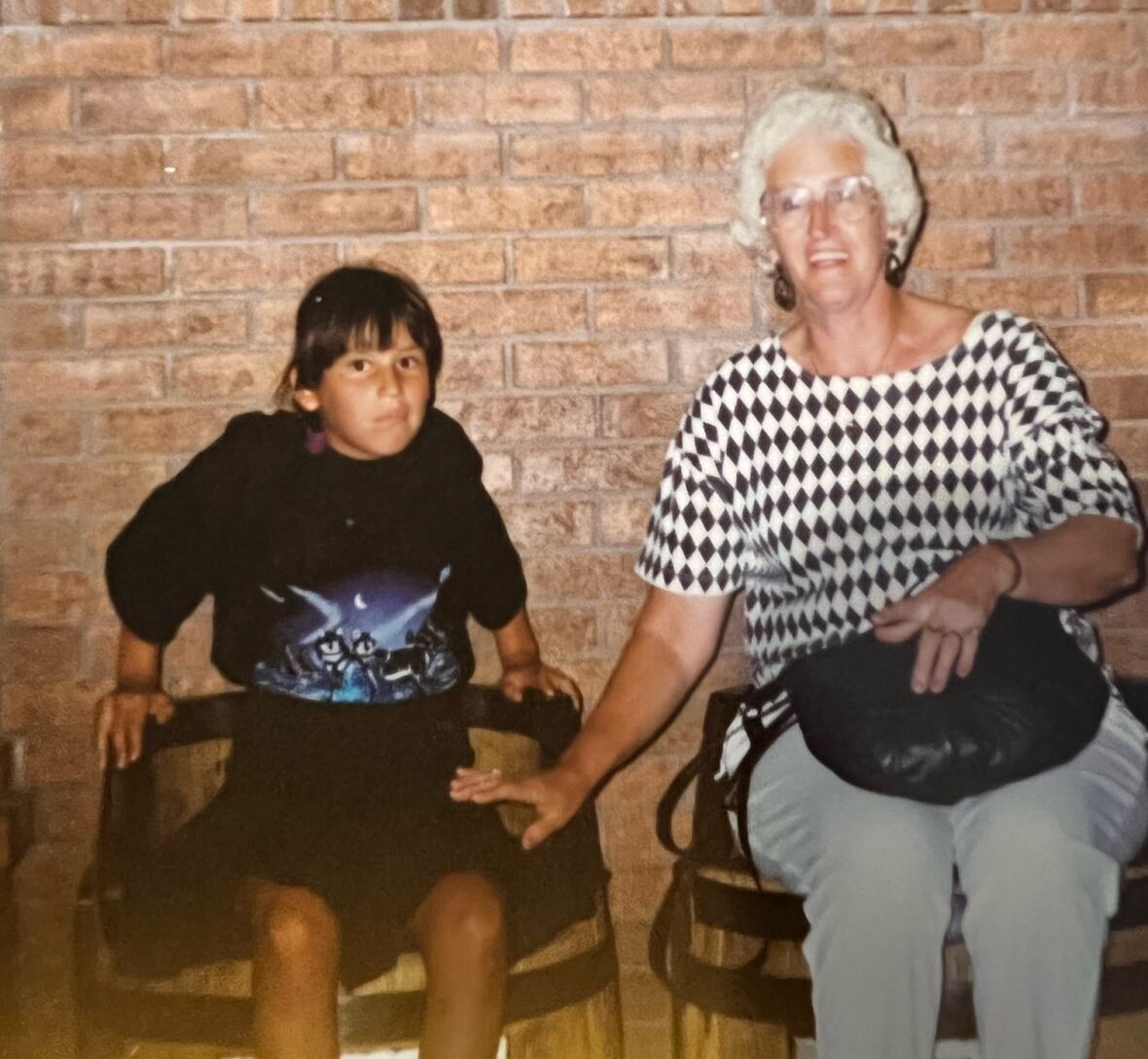This First Person article is the experience of Shaylene Lakey, who lives in Kelowna, B.C. This column is part of a Canada Day series exploring what Canada means to people across this country. For more information about CBC’s First Person stories, please see the FAQ.
I’ve been simultaneously grateful and confused to call Canada my home for most of my life.
I can vividly recall road trips from B.C.’s Okanagan to the Fraser Valley as a little girl, eyes wide in awe and wonder at the Rocky Mountain faces and deep green evergreens.
I had this recurring thought each trip, there and back: “How lucky am I that I was born here and now, in this place, beautiful British Columbia, in this country, Canada? Why me?”
It made me feel small. Knowing there were worse places to live and worse things to experience, I was comforted and grateful to live here. Trying to understand the seeming arbitrariness of why I was born in Canada and not anywhere else seemed too large a concept to question.
Gratitude has naturally been a default. While I tried not to spend much time focusing on the “why me” and learned more about the complexities of colonization as I got older, I realized how little I understood about my place as a Blackfoot woman in the world.
That confusion began to overtake the feeling of “lucky me.” Although I knew my mother was from the Siksika Nation in southern Alberta, I lived with my dad on Vancouver Island. I didn’t grow up on my reserve or even really know other First Nations people.

Occasionally, a First Nations advocate would come to my elementary school and pull me out of class to talk to me about Indigenous culture or take me to community events.
Unfortunately, all this did was make me even more aware I was different, and I often just wished I could melt into the common collective camouflage where no one would see me. Even those advocates felt far removed from my reality and identity as a Blackfoot girl.
The fact is that my identity is complex, wrapped up in colonial history that’s still very relevant and is the reason I exist in the space I do.
By the time I was a teenager, I was living with foster parents in a non-Indigenous family. It skewed my perception of what was “normal.” I wasn’t encouraged to explore my Indigenous heritage. Worse, it was downright discouraged and went unacknowledged.

I was, unbeknownst to me at the time, one of countless Indigenous children taken from their families and placed in care between 1992 and 2019 — a part of the Millennium Scoop.
In high school, Indigenous history was relegated to only a chapter or two in the curriculum. It left me feeling I was robbed of the chance to experience my culture more wholly.
It was often easier to pretend that part of me didn’t exist because being asked questions about being Blackfoot made me uncomfortable when I didn’t have answers.
And yet I loved being a proud Canadian. I can still feel the chills when my younger brother and I watched the men’s hockey team win the gold medal in 2002 at the Winter Olympics in Salt Lake City from our living room.
Can two things be true? Can I be proud and confused at the same time? What if the worst thing you believe about yourself — that your Indigeneity is not something to be proud of — is reinforced by a country you love?
It took me a long time to find peace and reconcile these complicated feelings of belonging and othering. It wasn’t one specific moment that shifted my view.
Technology is a blessing and a curse. It has shown me that while there is a dark side to the internet where people hate people like me, that also means there’s light.
I have access to a more complete history, which is a stark reality compared to the version I learned in school. If I have a question, I can Google it or talk to other Indigenous people.


Becoming a mom made me more curious to know about my Blackfoot roots so that my daughter would also know where she came from. What may have developed out of survival has become a strong sense of self when I reflect and look forward.
I also experienced genuine allyship when I participated in a missing and murdered Indigenous women march in 2016 and stood on the steps of the courthouse in Vernon, B.C., where I lived at the time.
What I know, and what I choose to stand in daily, is the fierce belief that Indigenous people in Canada are incredibly resilient and that I am resilient. I feel the way I do, proud and strong, because my people and Indigenous people in Canada have set that path for me.
The understanding and compassion from strangers who are seeing our history with new eyes mean more to me than the hundred who don’t want to learn. That’s why I am proud to be Canadian, to be Indigenous, in this plane of existence.
Do you have a compelling personal story that can bring understanding or help others? We want to hear from you. Here’s more info on how to pitch to us.
